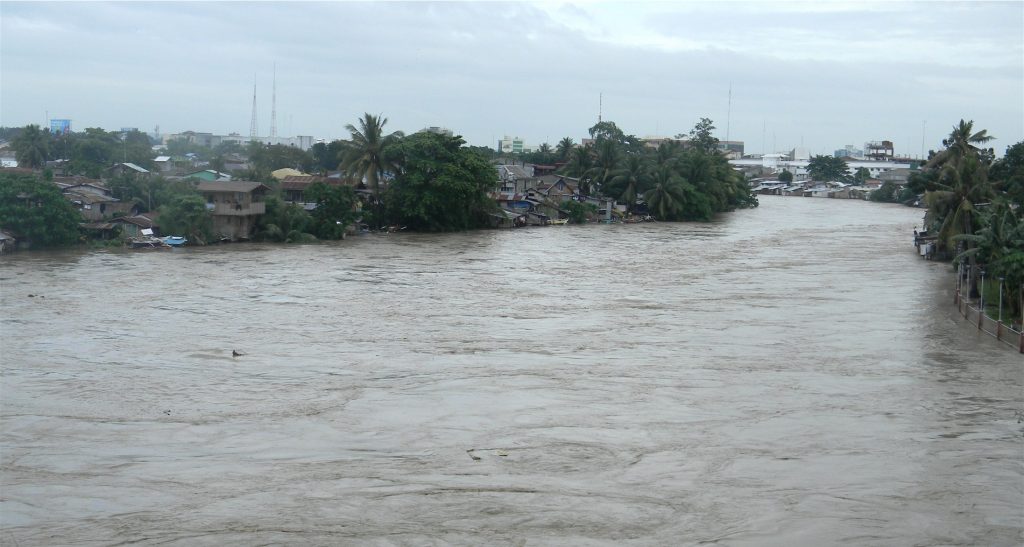“Overall, destruction of our natural resources is continuing, despite efforts of some of our concerned citizens to protect and manage them.” – Dr. Angel C. Alcala, Ramon Magsaysay Awardee for Public Service
***
“A few hundred years ago, at least 95% of the Philippines was covered by rain forest; only a few patches of open woodland and seasonal forest, mostly on Luzon, broke the expanse of moist, verdant land,” noted Dr. Lawrence R. Heaney, an American curator who holds honorary appointments at the Philippine National Museum.
By the time the Ferdinand Magellan “rediscovered” the Philippines on March 16, 1521, scattered coastal areas had been cleared for agriculture and residences. Three hundred years later, historical records showed rainforest still covered about 70% of the country.

But during the time of the presidency of Ferdinand Marcos, forests were devoid of trees. One critic wrote: “The government under Marcos had close ties to the major logging companies and had allowed the massive deforestation to stimulate the economy though exports.”
Today, what remains are but fragments of forests which are scattered all over the country.
“We only have less than a third of the forest cover we had at the turn of the 20th century,” deplored Senator Loren Legarda in a statement.
The country losses around 47,000 hectares of forest cover each year, according to the University of the Philippines and Harvard University alumnus. “Most of the country’s once-rich forest are gone,” said the UN Food and Agriculture (FAO) publication, Sustainable Forest Management. “Forest recovery, through natural and artificial means, never coped with the destruction rate.”
The forest cover in the lowlands, called mangroves, are not spared from denudation. “Approximately two-thirds of the country’s original mangroves have been lost,” reported Kathleen Mogelgaard, of the Washington, D.C.-based Population Reference Bureau.

The Department of Environment and Natural Resources (DENR) said the principal causes of the decimation of the country’s forest cover in the uplands are logging (both legal and illegal), forest fires, and natural calamities (like earthquakes).
Additional threats to Philippine forests come from mining operations – which also cause pollution – collection of fuelwoods (85% of meals in developing countries, according to FAO, are cooked over wood or charcoal), and kainginfarming (slash-and-burn agriculture).
Surging population has multiplied the problem. In the mid-1970s, there were only 43 million Filipinos. Today, there are some 107 million Filipinos and projected to grow to 147 million in 2050.
“Poverty, lack of jobs and wages, and absence of farm lots in the lowlands have forced some people to invade the forest,” observed Heherson Alvarez, former DENR honcho and lawmaker, adding that “the illness of the forest is complicated and cannot be cured with a one-stop prescription of a single medicine.”
Spreading cities have also contributed to the decimation of forest cover. “Asphalt is often the last harvest for many forests,” the late National Scientist Dioscoro Umali once stated in his speech.
“Where have all our forest gone?” Roy Alimoane, the retired director of Davao-based Mindanao Baptist Rural Life Center, wondered. “If we do not do anything to reverse this trend, these losses will have tragic consequences,” Senator Legarda reminded.
Deforestation is often equated with calamities like landslides and flash floods. Philippine Daily Inquirer, in its editorial, deplored: “In just one decade, 2000 to 2010, 27 floods and 17 landslides occurred, affecting about 1.6 million people each year and destroying crops and infrastructure worth tens of million pesos a year. In all these floods and landslides, deforestation was a major factor. Bald mountains, depleted forests and barren watersheds caused rainwater to flow down and flood the plains.”
The removal of forest cover makes the country susceptible to various environmental catastrophes. “Most of these were not seen in such intensity and magnitude before our time,” Alimoane stressed. “The signs cry out for immediate, nationwide attention.”
Take the case of the wild flora and fauna living in the forests. “Rapid forest loss has eliminated habitat for unique and threatened plant and animal species,” Mogelgaard pointed out.
More than 400 plant and animal species found only in the Philippines are currently threatened with extinction, including the Philippine eagle, tamaraw, and waling-waling, according to the World Conservation Union.

A pair of Philippine eagle needs at least 7,000 to 13,000 hectares of forest as nesting territory, according to the FAO. “Deforestation is terrible,” commented Dennis Salvador, the executive director of Philippine Eagle Center. “The Philippine eagle has become a critically endangered species because the loss of forest had made it lose its natural habitat.”
Once a species is gone, it cannot be brought back to life again. “When the last individual of a race of living beings breathes no more, another heaven and another earth must pass before such one can be seen again,” naturalist William Beebe said.
The removal of forest cover has bolstered soil erosion in the uplands, which comprise 60% of the country’s total land area of 30 million hectares. “Soil erosion is an enemy to any nation – far worse than any outside enemy into a country and conquering it because it is an enemy you cannot see vividly,” warned Harold R. Watson, an American agriculturist who received a Ramon Magsaysay Award in 1985 for international understanding. “It’s a slow creeping enemy that soon possesses the land.”
But soil erosion is more just than just landslide. More importantly, it threatens food production. In their book, Soil Erosion: Quiet Crisis in the World Economy, Lester Brown and Edward Wolf wrote: “The loss of topsoil affects the ability to grow food in two ways. It reduces the inherent productivity of land, both through the loss of nutrients and degradation of the physical structure. It also increases the costs of food production.”
Without forest cover, the watersheds loss their capability to capture water during the rainy season. “There has been a drop of 30% to 50% in the country’s water resources in the past 20 years or so,” said Dr. Rafael D. Guerrero III, an academician with the National Academy of Science and Technology.
Today’s “crisis in water and sanitation is – above all – a crisis of the poor,” said the United Nations Development Program study, Beyond Scarcity: Power, Poverty and the Water Crisis. “Unlike the energy crisis,” noted Klaus Toepfer, former executive director of UN Environment Program, “the water crisis is life threatening.”
Deforestation has also altered the climatic condition in the country. Ask Father Jesus Ramon Villarin, a Jesuit scientist, who localized the global climate issue by exploring rainfall patterns in Mindanao in the last 50 years and the impact on crop production and the supply of freshwater resources.
This was what Father Villarin, who used to work with the Manila Observatory, has found: Rainfall over the northern coast of Mindanao has generally increased over the decades, with the northeast section receiving most of the increase. But the southern regions are experiencing decreasing rainfall, mostly in the south-central parts.
A person is missed when he is longer around, so goes a saying. The same is true with trees. “We have laid to waste millions of hectares of forest land, as though heedless of the tragic examples of the countries of Africa, the Middle East, and the Mediterranean, where large areas have become barren, if not desertified. If we have not, in fact, reached this state, we are almost at the point of irreversibility,” Alvarez reminded.
One day, Filipinos may wake up without trees anymore. “A person without children would face a hopeless future,” American President Theodore Roosevelt declared, “a country without trees is almost as helpless.”

Something must be done before it’s too late. “From 21 million hectares of forests in 1900, we are now left with less than seven million hectares of forests,” Senator Legarda lamented. “This cannot be allowed to be left unchecked. Only by working together, by rallying Filipinos and our leaders to this cause, will we be able to reverse the tide.”
The statement of Fulgencio Factoran, when he was the DENR head, is a good reminder. “Our countrymen should not accept environmental degradation as a fact of modern life; instead, they should be willing to go to the forefront with shovel and seedling in hand, or with placards and principles, and articulate their renewed affinity with nature and its elements.”






